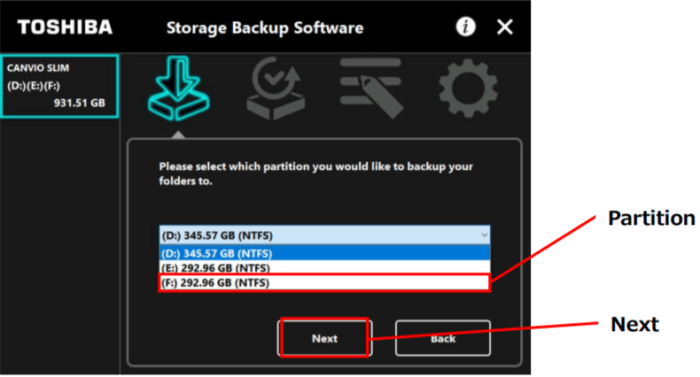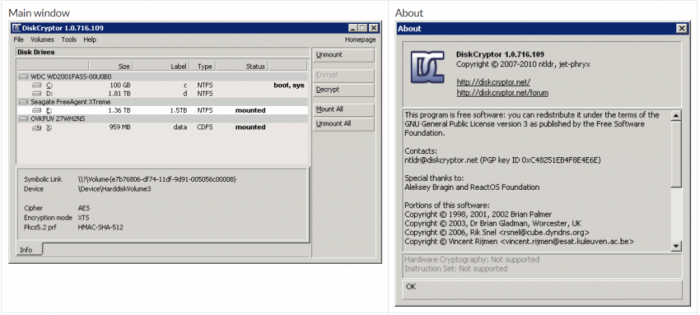Whole drive encryption software – In today’s digital landscape, data security is paramount. Whole drive encryption (WDE) software provides a robust solution for protecting all data stored on a hard drive or solid-state drive (SSD), ensuring confidentiality and integrity even if the device is lost or stolen. This comprehensive guide delves into the intricacies of WDE, exploring its functionalities, benefits, different types, and crucial considerations for choosing the right software for your needs.
We’ll also address frequently asked questions to provide a complete understanding of this vital security measure.
Understanding Whole Drive Encryption
Whole drive encryption, as the name suggests, encrypts the entire storage device. This means every single bit of data—from your operating system and applications to your personal files—is scrambled and rendered unreadable without the correct decryption key. This differs from file-level encryption, which only protects individual files or folders. WDE offers a far more comprehensive level of security, safeguarding your data even if the drive is physically accessed or the operating system is compromised.

Source: straight.com
How Whole Drive Encryption Works, Whole drive encryption software
WDE software typically employs strong encryption algorithms, such as AES (Advanced Encryption Standard) with 256-bit key lengths, to encrypt the data at the drive level. The encryption process occurs transparently in the background, meaning you can continue using your computer normally without noticeable performance impact (although some minor slowdown is possible, depending on the hardware and software). Upon boot-up, the software prompts for a password or other authentication method (e.g., biometric authentication) to decrypt the drive, making your data accessible.
If the correct credentials are not provided, the drive remains inaccessible, effectively protecting your sensitive information.
Types of Whole Drive Encryption
Several types of WDE exist, each with its own characteristics and implementation methods:
- Hardware-Based Encryption: This method utilizes a dedicated encryption chip on the hard drive itself. The encryption and decryption processes are handled by the hardware, generally resulting in faster performance and enhanced security compared to software-based solutions. Examples include self-encrypting drives (SEDs).
- Software-Based Encryption: This approach uses software installed on the operating system to encrypt the entire drive. While generally more affordable than hardware-based solutions, software-based WDE can be more susceptible to attacks if the operating system is compromised. Popular examples include BitLocker (Windows), FileVault (macOS), and VeraCrypt (cross-platform).
- Full Disk Encryption (FDE): Often used interchangeably with WDE, FDE refers to the complete encryption of a hard drive or SSD. It’s a comprehensive approach that secures all data on the drive.
- Pre-Boot Authentication: Many WDE solutions offer pre-boot authentication, requiring the user to enter their password or other credentials before the operating system even begins loading. This adds an extra layer of security, protecting against attacks that might target the operating system itself.
Benefits of Using Whole Drive Encryption Software
Implementing WDE offers several compelling advantages:
- Data Confidentiality: WDE ensures that your data remains confidential even if your device is lost, stolen, or physically accessed by unauthorized individuals.
- Data Integrity: Encryption protects data from unauthorized modification or tampering. Any attempt to alter the encrypted data will be detected.
- Compliance with Regulations: Many industries (e.g., healthcare, finance) have strict data protection regulations (like HIPAA, GDPR). WDE can help organizations meet these compliance requirements.
- Remote Wipe Capability: Some WDE solutions offer remote wipe capabilities, allowing you to securely erase all data on the encrypted drive remotely if the device is lost or stolen.
- Peace of Mind: Knowing your sensitive data is protected provides significant peace of mind.
Choosing the Right Whole Drive Encryption Software
Selecting the appropriate WDE software depends on several factors:
- Operating System Compatibility: Ensure the software is compatible with your operating system (Windows, macOS, Linux).
- Encryption Algorithm Strength: Opt for software using strong encryption algorithms like AES-256.
- Ease of Use: Consider the user interface and how easy the software is to set up and manage.
- Performance Impact: Evaluate the potential performance impact on your system. While modern WDE solutions are optimized for performance, some impact is inevitable.
- Cost: Software options range from free and open-source to commercial solutions with varying price points.
- Support and Updates: Choose a vendor that provides reliable customer support and regular software updates to address security vulnerabilities.
Frequently Asked Questions (FAQs)
- Q: Is whole drive encryption slow? A: Modern WDE solutions are optimized for performance and the impact on speed is generally minimal for most users. However, some slowdown might be noticeable, especially on older hardware.
- Q: Can I recover my data if I forget my password? A: Unfortunately, if you forget your password or encryption key, data recovery is typically impossible. It’s crucial to choose a strong, memorable password and consider storing it securely (e.g., using a password manager).
- Q: What is the difference between BitLocker and FileVault? A: BitLocker is Microsoft’s built-in WDE solution for Windows, while FileVault is Apple’s equivalent for macOS. Both offer robust encryption but have different interfaces and features.
- Q: Is VeraCrypt safe? A: VeraCrypt is a free, open-source WDE software that’s widely considered secure and reliable. Its open-source nature allows for community scrutiny, enhancing its trustworthiness.
- Q: How do I choose between hardware and software encryption? A: Hardware encryption (SEDs) generally offers better performance and security, but it’s more expensive. Software encryption is more affordable but can be vulnerable if the OS is compromised.
Conclusion
Whole drive encryption is a crucial security measure for protecting sensitive data. By understanding the different types of WDE, their benefits, and the factors to consider when choosing software, you can effectively safeguard your valuable information. Investing in a robust WDE solution is a proactive step towards ensuring data confidentiality and integrity in today’s increasingly interconnected world.

Source: ubackup.com
References
Call to Action
Protect your valuable data today! Explore the different whole drive encryption software options and choose the one that best fits your needs and budget. Don’t wait until it’s too late—secure your digital assets now.
FAQ Section: Whole Drive Encryption Software
What are the different types of encryption algorithms used in whole drive encryption software?
Common algorithms include AES (Advanced Encryption Standard), which is widely considered a strong and secure option. Others may include older algorithms, but AES is the current standard for its robustness.
How does whole drive encryption affect system performance?
Encryption can slightly reduce system performance, especially on older hardware. However, modern hardware and optimized software minimize this impact significantly.

Source: securityescape.com
What happens if I lose my encryption key?
Losing your encryption key renders your data irretrievably lost. It’s crucial to securely store your key and consider recovery options provided by your chosen software.
Is whole drive encryption suitable for all operating systems?
Yes, whole drive encryption software is available for various operating systems, including Windows, macOS, and Linux. Specific software compatibility should be checked.
Can I encrypt only specific partitions or folders instead of the whole drive?
While whole drive encryption encrypts everything, some software allows for encrypting specific partitions or containers within the drive, offering a more granular approach to data protection.
